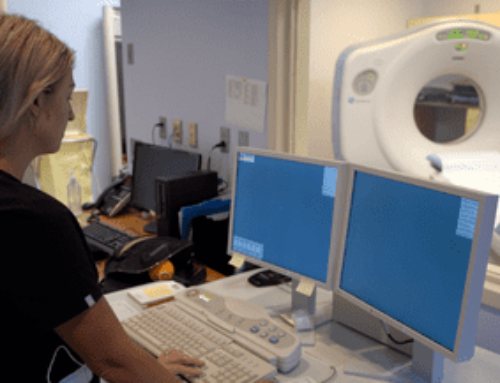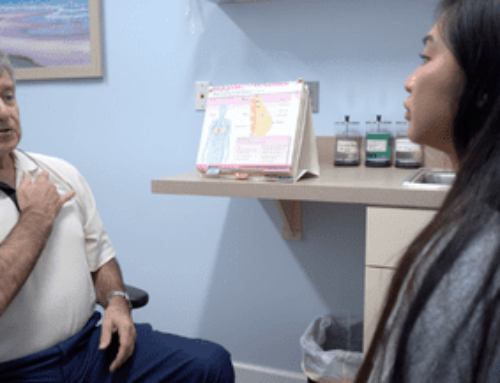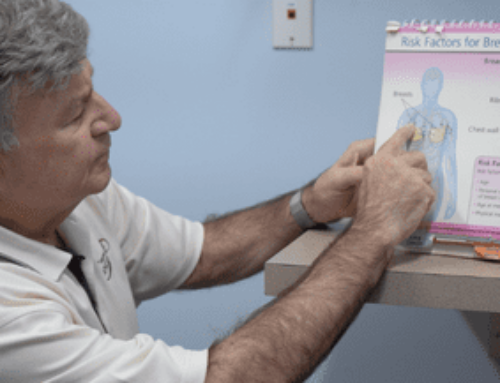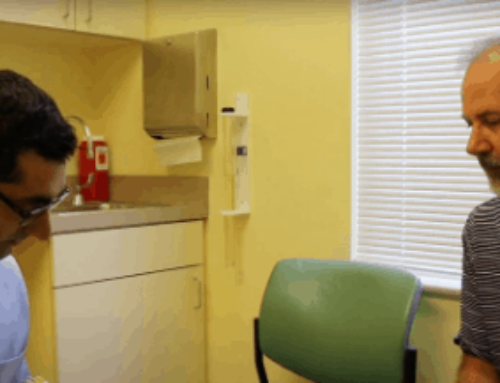High-dose-rate radiation therapy, or brachytherapy, is a procedure that involves placing radioactive material inside the body to allow doctors to deliver higher doses of radiation to more specific areas.
“We have had low-dose-rate therapy as an option, but a patient had to be hospitalized and monitored,” says Maneesh Gossain, M.D., a board-certified radiation oncologist at Central Florida Cancer Care Center. “Now, we have high-dose-rate (radiation therapy), which is less time consuming for the patient and equally effective.
How Is High-Dose-Rate Radiation Therapy Performed?
High-dose-rate brachytherapy involves placing a radioactive source of high strength directly into the tumor using specialized instruments. With the use of computerized treatment planning, physicians can vary the radiation dosage and placement, resulting in more precise treatment and potentially less harm to healthy tissue.
External beam radiation therapy (EBRT) directs high-energy x-ray beams at a tumor from outside the body. Brachytherapy is one type of internal radiation therapy that places radioactive material directly inside or next to the tumor. It uses a higher total dose of radiation to treat a smaller area in less time than EBRT.
HDR brachytherapy delivers highly localized doses of radiation to the tumor quickly. It may be used alone or with external beam radiation therapy to treat cancer.
“We often use HDR therapy for breast cancer, prostate cancer, and we use it for gynecological tumors,” says Dr. Gossain. “Typically, a catheter is placed in different parts of the body based on tumor size and location.. Treatment time is significantly reduced, side effects are less for the patient, and it’s more convenient and easy.”
High-dose-rate (HDR) brachytherapy delivers a single high dose of radiation in a short period. Each treatment takes approximately 10-15 minutes. The radioactive material travels from a special high-dose-rate machine that is attached to tubes or needles inserted into the tumor. Upon completion, the radioactive material is returned to the device so that no radioactive material remains in the body.
Patients can typically return home after the treatment. Sometimes, several treatments are administered over a few days or weeks. If so, the applicator may be left in between treatments.
Treatment plan
One’s treatment plan includes the amount (dose) of radiation therapy to be received and the type of radioactive substance or implant.
Brachytherapy is used to treat many different types of cancer, including:
- Brain cancer
- Breast cancer
- Prostate or rectal cancer
- Cervical or vaginal cancer
- Esophageal cancer
- Eye cancer
- Head and neck cancer
- Lung cancer
- Pancreatic cancer
- Skin cancer
The total radiation dose to be received is precisely calculated and ordered in units called grays (Gy). Depending on the treatment plan, patients may receive the full dose of radiation in one treatment, or it may be divided up into several treatments of smaller doses (called fractions).
The total dose of radiation depends on:
- The type of radioactive material
- The type of cancer
- How sensitive the tumor is to radiation therapy (radiosensitivity)
- The tumor location
- The amount of tissue to be treated
- Whether other cancer treatments have been or will be administered
- The patient’s overall health
A physician may also use a computer to plan the treatment before the actual procedure. Patients may receive up to 10 separate HDR treatments over one or more weeks. Preparations for HDR therapy may include:
- Bowel preparation
- Pre-treatment ultrasound, MRI or CT scan
- Blood tests
- Electrocardiogram (EKG)
- Chest X-rays
Results of High-Dose-Rate Radiation Therapy
Brachytherapy can be used alone or in conjunction with other cancer treatments. For example, brachytherapy is sometimes administered post-surgery to destroy any cancer cells that may remain. Brachytherapy can also coincide with external beam radiation.
Studies show that HDR brachytherapy in early prostate cancer results in high local control rates with minimal side effects. Clinical data also demonstrates excellent results achieved with HDR therapy as well as treatment time reduction.
If you have questions or would like to learn more about high-dose-rate radiation therapy, please feel free to contact us.





